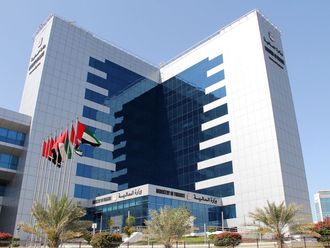The fiscal crunch precipitated by weak oil prices has prompted severe expenditure cuts by governments across the Gulf Cooperation Council (GCC). Unfortunately, such conventional cost-cutting will not solve the budgetary woes of GGC member states. The problem is that even if oil prices hovered around $50 (Dh183.65) a barrel and GCC governments could grow non-oil revenues by 10 per cent annually for the rest of this decade, they would still need to reduce spending by around $100 billion a year (7 per cent of GCC GDP) to achieve a fiscal balance.
What is needed instead is a transformation in how governments spend. To achieve sustainable fiscal positions, GCC governments must revamp their spending in a way that saves money while positioning their economies for growth and serving the constituents with the highest possible quality. This will have a better long-term effect than short-term savings from across-the-board or focused cost-cutting.
A transformative approach to revamping government spending generates savings by making the government “fit for service” through a focus on organisational improvements, such as the development of critical capabilities, cost structure transformation and operating model design.
“Fit for service” uses a systemic perspective to unlock the significant savings inherent in digitisation, centralisation and cross-government collaboration. Moreover, it addresses the development of local talent and the creation of a change-friendly culture.
The “fit for service” approach is driven by four actions, the first of which is alignment to the national strategy. Before a government entity can transform its cost basis, it must be able to clearly articulate its mission, how it will serve its constituents, the set of products and services it needs to deliver on its mission, and the underlying capabilities required to deliver on its fundamental purpose. This ensures that cost cutting is coherent — savings arise from areas that are not critical to achieving the national strategy while investments flow toward building the right capabilities. This involves cutting “fat” but not “muscle.”
The second action is a concerted attack on the government entity’s existing cost structure. This can be achieved by enhanced capital project and cash flow management, a more efficient supply chain, a reduction in unnecessary overheads, and the use of digital platforms and tools to promote efficiency.
GCC governments can release cash and optimise the use of capital by exercising more discipline in the capital-planning process, reducing overdue receivables, and optimising supplier payment terms. They can dispose of surplus assets and better manage the life cycles of the assets they retain. They can adopt the kinds of cutting-edge supply chain management practices, such as performance-based procurement, used in the private sector. They can reduce overhead by examining their manpower needs. While headcount reductions are difficult, there are less controversial approaches such as introducing flexible employment and cutting discretionary expenses. Finally, they can realise efficiencies by digitising operations such as automating manual processes, using digital means to deliver services, and integrating across government entities through digital platforms.
Digital costs are also ripe for cost savings through initiatives that, for example, standardise assets, rationalise applications, and consolidate data and applications in the cloud. When such measures are properly implemented the private sector has produced savings of 20 per cent to 40 per cent. There is no reason to believe that governments cannot achieve similar savings.
The third action is the development of the capabilities needed to execute the national strategy. The set of capabilities required will vary with national strategy and the missions of individual government entities. However, there are a few select capabilities that most, if not all, governmental entities need. These are the ability to deliver services in a manner centred on their constituents’ needs with deep digital expertise and a talent for collaboration with external stakeholders as well as other government entities. The ability to collaborate is particularly important given rising private sector participation throughout the region.
The fourth, and final, action is the reorganisation of the government’s operating models. Operational structures are a major determinant of a government’s cost structure and its performance. Redesigning them can yield tremendous benefits if they are better aligned with the national strategy, work in cost-efficient ways, and provide a more effective platform for deploying critical capabilities.
Governments can follow four principles when redesigning operating models. They can adopt constituent-centric operating models and use shared services in the background, which can yield overhead reductions. They can outsource support services — simultaneously cutting costs and bolstering the private sector. They can create performance-based organisations with an empowered function within government units and across government at large. Finally, they can create a team within the government entity to drive digitisation efforts and liaise with a government-wide entity that acts as government CIO.
Conventional cost-cutting has become the default solution to budgetary shortfalls in the public and private sectors because it is easy to mandate across-the-board budget cuts. But for GCC states, with ambitious long-term economic goals, something more than a short-term fix that uses today’s numbers to disguise tomorrow’s crises, is needed. Instead, they should use a far-sighted approach, one that makes the government “fit for service” and sets their budgets on a sound footing, providing the amount and quality of services that their constituents need today and tomorrow.
— Ashish Labroo and Sevag Papazian are principals with Strategy & while Rawia Abdel Samad is director of the Ideation Centre, Strategy& (formerly Booz & Company).












